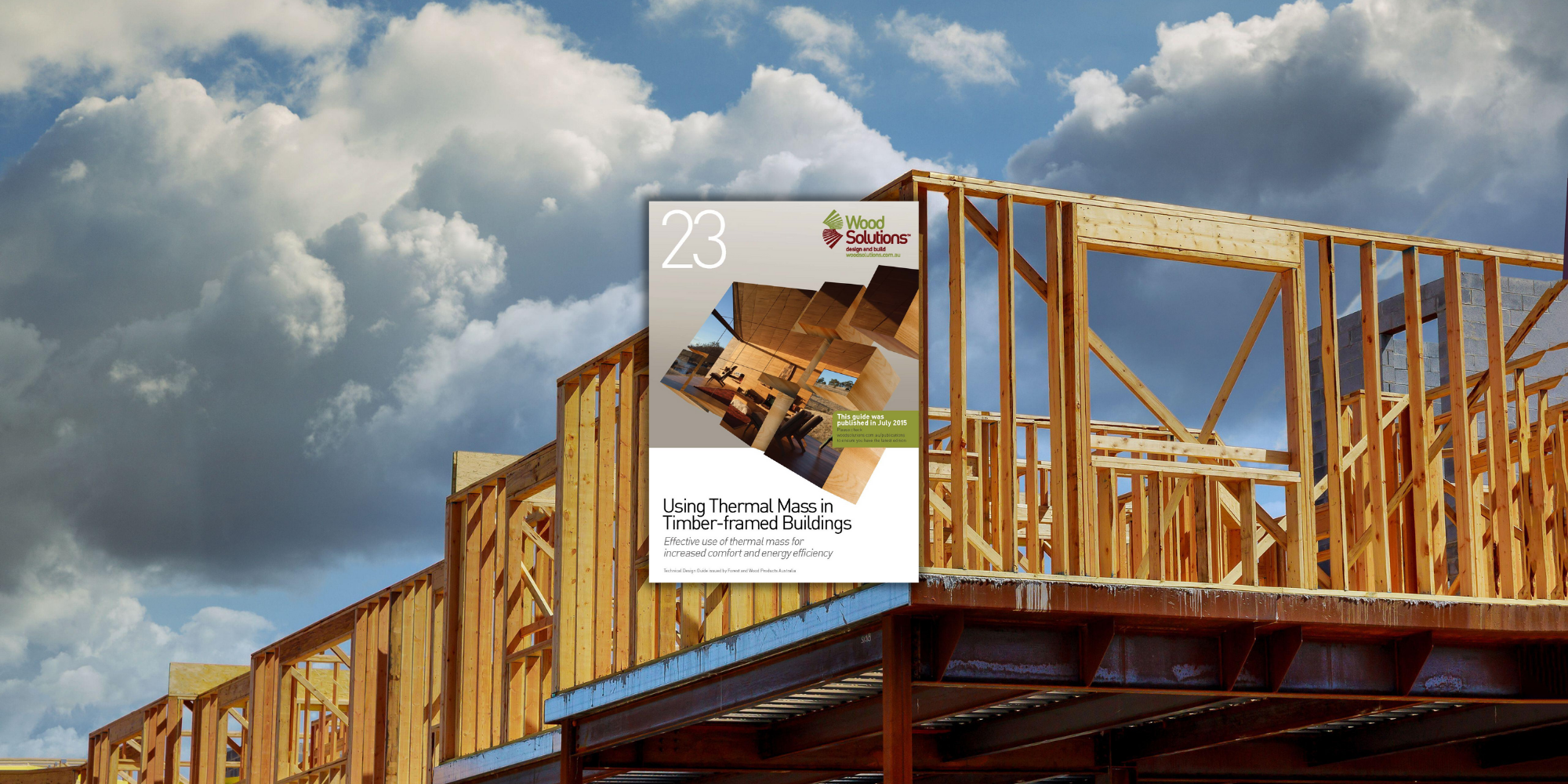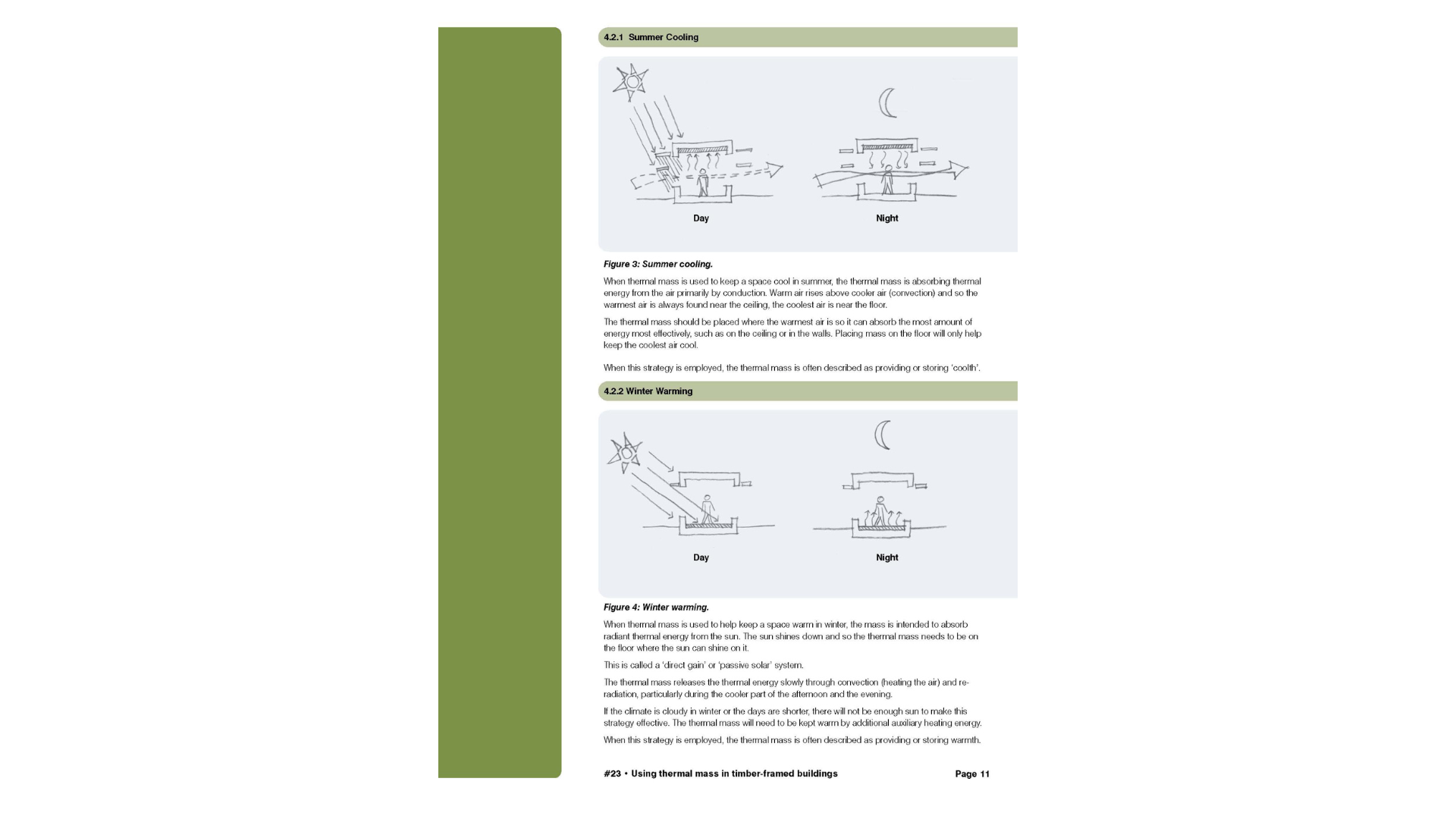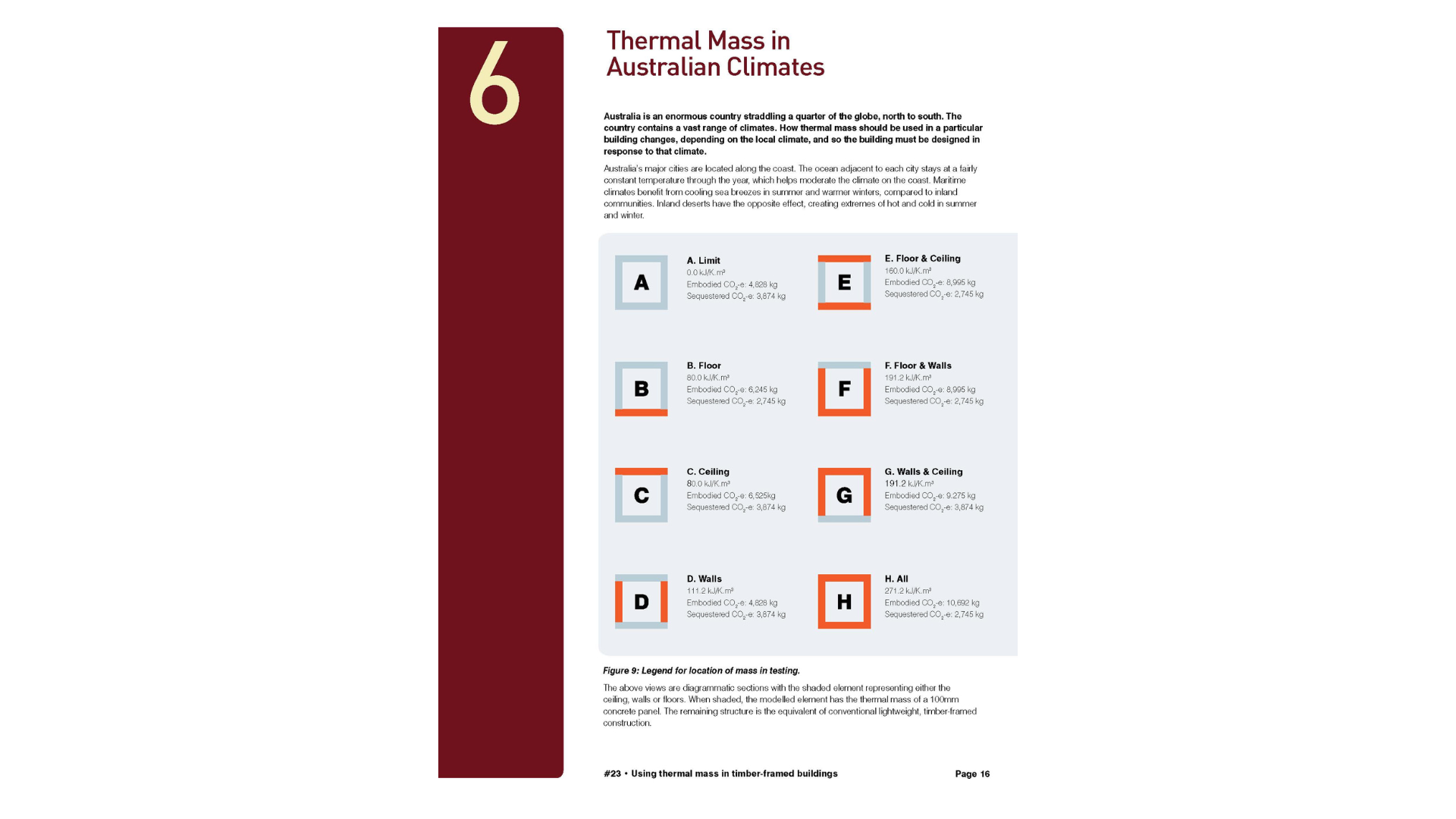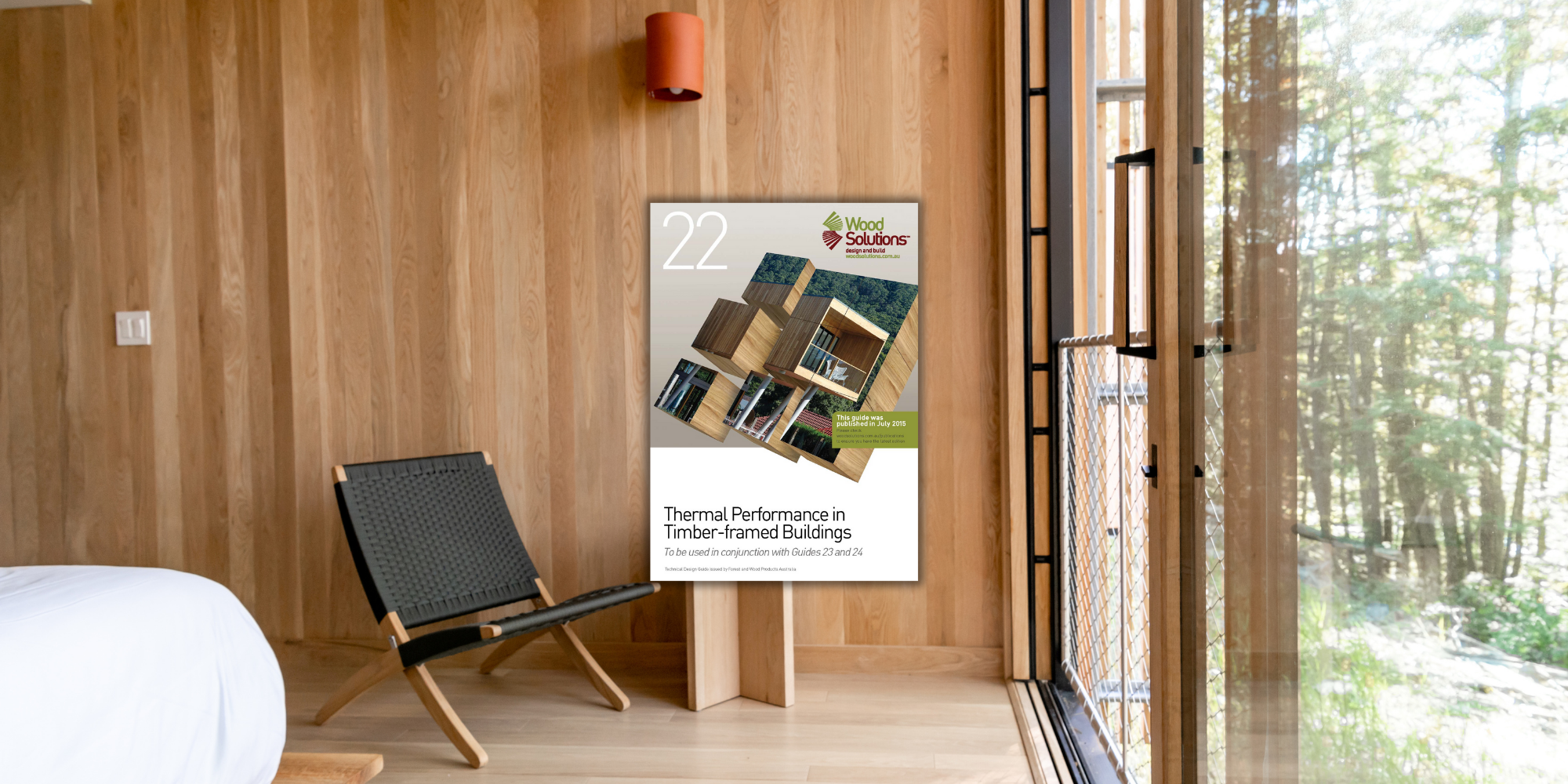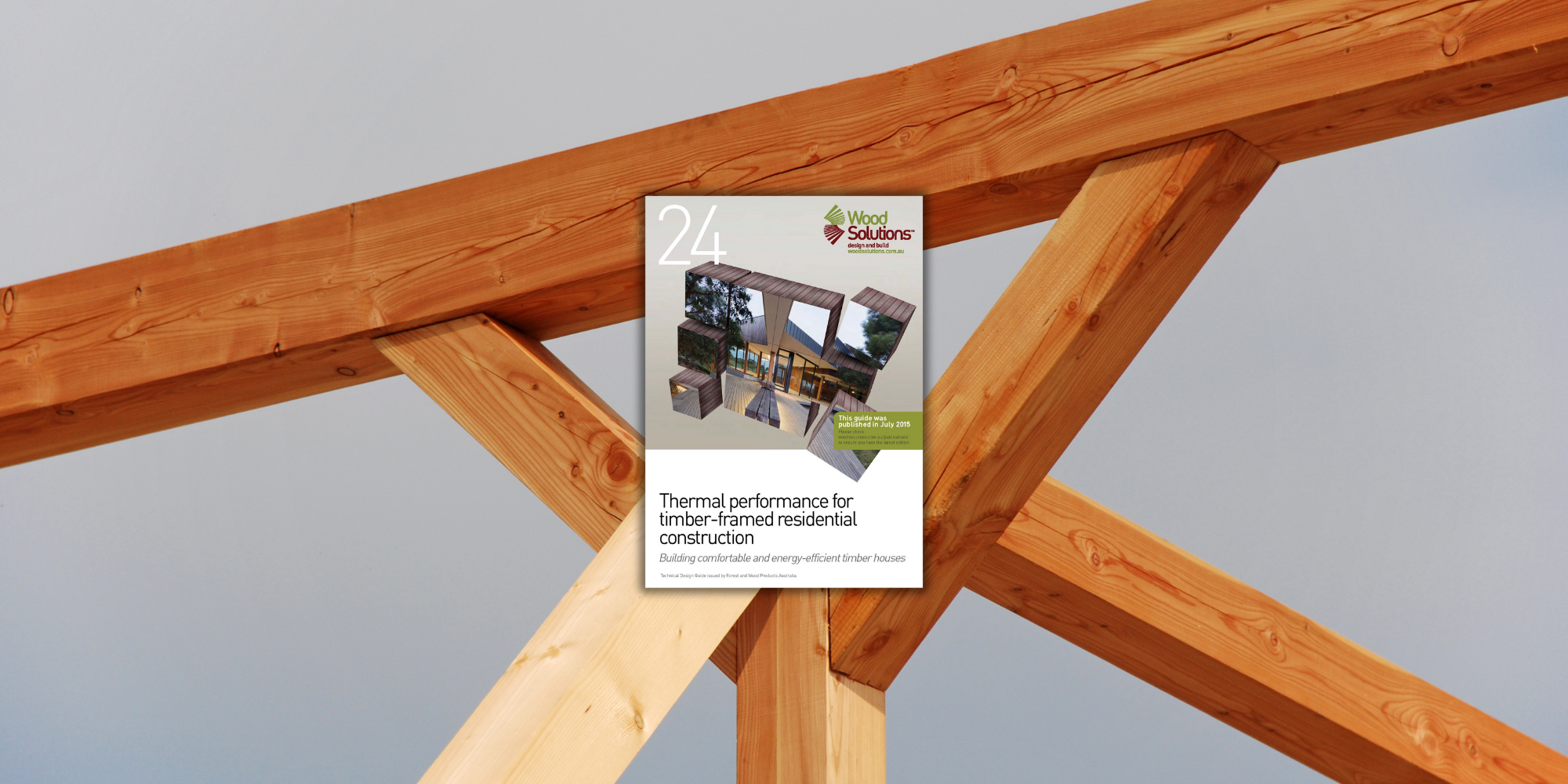This guide was written following an analysis of existing rules of thumb and existing design guidance. It is based on analysis of both real-world and computer simulations of thermal mass in typical project homes and experimental structures in several Australian climates.
Introduction
The project discussed in this Technical Design Guide revealed the following results:
- It is possible to have too much thermal mass
- Thermal mass is more useful in some climates than in others
- How much thermal mass to use, and whether to use it in the floor, walls or ceiling, depends on the local climate
- Thermal mass needs to be in one place to aid cooling and a different place to aid heating
- The size and location of the windows has as large an influence on the thermal efficiency of a space as the quantity of thermal mass
- Because the manufacture of many materials with high thermal mass results in high carbon dioxide emissions, the inclusion of thermal mass may actually increase rather than reduce the carbon emissions of a building, when viewed across its entire lifecycle
